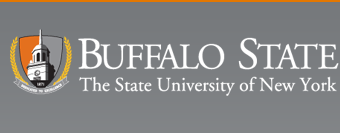Date of Award
5-2022
Access Control
Open Access
Degree Name
Biology, M.A.
Department
Biology Department
Advisor
Robert J. Warren II, Ph.D., Associate Professor of Biology
Department Home page
https://digitalcommons.buffalostate.edu/biology_theses/
First Reader
Daniel L. Potts, Ph.D., Chair and Associate Professor of Biology
Second Reader
Olga Novikova, Ph.D., Assistant Professor of Biology
Third Reader
Gavin M. Leighton, Ph.D. Assistant Professor of Biology
Abstract
Organisms produce chemical weapons for defense, but target organisms can develop resistance. In their introduced range, non-native species may bring “novel weapons” against which native organisms have not co-evolved resistance. The invasive European fire ant (Myrmica rubra) may have brought antimicrobial secretions to the Northeastern United States that are novel weapons against native fungal and bacterial soil organisms. I hypothesized that M. rubra would better inhibit seed pathogens resulting in greater emergence of native myrmecochorous Viola sororia seeds and, as a side effect, more strongly inhibit arbuscular mycorrhizal fungi than a native seed dispersing ant (Aphaenogaster picea). I also expected M. rubra would have greater suppressive effects on microbial respiration. To test this, I measured taxonomic richness, emergence and biomass of plants that germinated from the seed bank (volunteer plants) and introduced V. sororia seeds. From seeds that failed to germinate I measured percent cover of fungal growth. Finally, I recorded mesocosm CO2 flux as a proxy measurement of microbial respiration. Viola sororia emergence and biomass did not differ significantly in mesocosms inhabited by M. rubra, A. picea, and control treatments, but overall seed handling was low. Volunteer plant taxonomic richness and percent cover were lower in M. rubra mesocosms than A. picea or controls, perhaps because of the comparatively higher activity levels of M. rubra resulted in more bioturbation. Mesocosm microbial respiration (CO2 flux) was lower in both M. rubra and A. picea mesocosms than controls, indicating an 'ant' effect rather than a non-native ant effect via novel weapons.
Recommended Citation
Stewart, Hannah A., "Native and non-native ant impacts on soil microbes" (2022). Biology Theses. 48.
https://digitalcommons.buffalostate.edu/biology_theses/48
Included in
Botany Commons, Entomology Commons, Other Microbiology Commons, Parasitology Commons, Pathogenic Microbiology Commons, Terrestrial and Aquatic Ecology Commons


